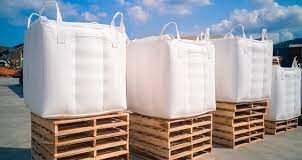Printers are more than just a piece of hardware you use to print out your documents.
In the past, printers were just seen as a way to print out your work. But now, they can do so much more! There are many different types of printers on the market today that can fulfill all of your printing needs.
Whether you’re looking for a printer that is compact and easy to use or one that has high-capacity ink tanks and prints quickly, we will cover everything you need to know here.
So if you’re in the market for a new printer and want to discover more about printer types.
A Brief History for Types of Printers
Before we dive into the different types of printers that exist today, let’s take a quick trip down memory lane.
In the early days of computing, there were no such things as printers. Instead, people used punch cards and other methods to input data into computers.
This all changed in the late 1970s when the first dot matrix printer was introduced. Dot-matrix printers were a vast improvement over punch cards, but they were still quite slow and noisy.
The next big breakthrough in printing technology came in 1984 with the introduction of the laser printer. Laser printers quickly became the preferred choice for businesses and homes due to their fast print speeds and high-quality output.
Today, laser printers are still widely used, although they have been eclipsed by newer technologies in recent years.
Inkjet Printers
As we mentioned earlier, inkjet printers are the most common type of printer on the market today.
Inkjet printers work by spraying tiny droplets of ink onto a piece of paper. These droplets combine to form the desired image or text. Inkjet printers are popular because they are relatively inexpensive and easy to use.
However, they do have some drawbacks. For example, inkjet printers tend to be slower than other types of printers, and their output quality is not always as good as lasers.
Not to mention, inkjet printers are notorious for being finicky. If you don’t use them often, the ink can dry out and clog the print heads. This can lead to expensive repairs.
Photo Inkjet Printers
If you’re looking for a printer that can produce high-quality photo prints, then a photo inkjet printer is the way to go.
Photo inkjet printers use special inks and printing techniques to produce images that rival those of professional photo labs. In fact, most regular inkjet printers are not conducive to printing photos.
So if you’re serious about photography, make sure to get a photo inkjet printer. Moreover, many photo inkjet printers come with built-in editing features that allow you to crop, rotate, and enhance your photos before printing them.
Single-Function Inkjet Printers
One type of inkjet printer that is becoming increasingly popular is the single-function inkjet printer.
As the name suggests, these printers only print – they do not scan, copy, or fax.
Single-function printers are usually smaller and cheaper than all-in-one devices. So if you don’t need any extra features, a single-function inkjet printer might be the right choice for you.
Laser Printers
Laser printers are the second most common type of printer, and they are often used for business applications. Laser printers work by using a laser to draw an image onto a drum.
The drum then rolls the image onto a piece of paper. Laser printers are fast and produce high-quality output. However, they can be quite expensive, especially if you need to print in color.
In addition, laser printers tend to be large and bulky, so they may not be the best choice if you’re looking for a portable printer. This means that they may not be suitable for home use.
Color Laser Printers
If you need to print in color, then you will need a color laser printer. Color laser printers are similar to regular lasers, but they use four colors (cyan, yellow, magenta, and black) instead of just one.
As you might expect, color laser printers are more expensive than regular lasers. However, they are still quite affordable compared to other types of color printers.
Besides that, color laser printers tend to be faster than inkjet printers, and they produce higher-quality output. This also means that they are more suitable for business applications.
LED Printers
LED printers are a newer type of printer that uses light-emitting diodes (LEDs) instead of a laser to draw an image onto the drum.
LEDs have many advantages over lasers, including being smaller and cheaper. In addition, LED printers tend to be faster than their laser counterparts.
However, LED printers are not as widely available as other types of printers, so you may have to do some research to find one. Besides that, LED printers are not as suitable for business applications.
Thermal Printers
Thermal printers are less common than inkjet or laser printers, but they are still used in some applications.
Thermal printers work by using heat to transfer an image onto a piece of paper. Thermal printers are fast and quiet, but they tend to be more expensive than other types of printers.
Furthermore, thermal printers usually require special paper, which can be difficult to find.
Impact Printers
Impact printers are not as common as they once were, but they are still used in some industrial applications. Impact printers work by using a hammer to strike an inked ribbon. The ink is then transferred onto the paper.
One of the biggest advantages of impact printers is that they are very rugged and reliable. However, they are also quite noisy and slow. Also, the quality of their output is not as high as other types of printers.
However, some caveats to using an impact printer are that they’re quite noisy and slow. They also don’t produce the highest quality output, but they’re very rugged and reliable.
Dot Matrix Printers
Dot-matrix printers are the oldest type of printer, and they are not as common as they once were. Nevertheless, they are still being used by people in some applications.
Dot-matrix printers work by using a series of pins to strike an inked ribbon. The resulting dots form the desired image or text. Dot-matrix printers are slow and noisy, but they are very inexpensive.
Moreover, dot matrix printers are often used for printing multipart forms, such as invoices or receipts. However, their output quality is not as good as other types of printers.
3D Printers
Finally, we have arrived at the cutting edge of printer technology: the three-dimensional (or “additive”) printer.
Additive printers work by depositing layers of material to create a three-dimensional object. This technology is still in its infancy, but it has the potential to revolutionize manufacturing and other industries.
Also, additive printers can be used to create objects that are not possible to create with traditional manufacturing methods. In fact, many industries are already using additive printers to create prototypes and other objects.
Manufacturing Printers
In addition to the types of printers that are available for general consumer use, there are also several different types of printers that are designed for specific industrial applications.
For example, there are several different types of printers that are used in the manufacturing process. These printers can be used to create prototypes or even final products.
Not to mention, there are also several different types of printers that are designed for specific business applications.
For example, receipt printers and label printers are two types of printers that are commonly used in businesses.
A0 Printers
An A0 printer is a type of printer that is large enough to print documents that are up to A0 size. A0 is the largest standard paper size, and it measures 1189mm x 1683mm.
A printer that can print documents up to this size is typically quite large and expensive. However, they are ideal for businesses that need to print large documents on a regular basis.
These printers are usually only found in commercial printing shops.
Considerations to Make When Choosing a Printer
Now that you know about the different types of printers that exist, you may be wondering which one is right for you.
The type of printer you choose will depend on several factors, such as your budget, your needs, and the type of output you require.
Your Budget
One of the most important considerations to make when choosing a printer is your budget. Printers can range in price from around $100 to several thousand dollars.
Of course, you’ll get what you pay for in terms of quality and features. So, if you need a high-quality printer with all the bells and whistles, you’ll have to be prepared to pay more.
Your Needs
Another important consideration is your needs. What do you need a printer for? Are you going to be using it for general printing tasks? Or do you need a specific type of printer for a specific task?
For example, if you need a printer that can print high-quality photos, then you’ll want an inkjet or laser printer. On the other hand, if you need a printer that can print multipart forms, then you’ll want a dot matrix printer.
The Type of Output You Require
Finally, you’ll need to consider the type of output you require. Do you need a printer that can print in color? Or do you just need a black and white printer?
Do you need a high-resolution printer? Or is lower resolution sufficient? These are all important questions to ask yourself before making your final decision.
Ink Type
When it comes to ink, there are two main types: dye-based and pigment-based.
Dye-based inks are the most common type of ink used in printers. They are less expensive than pigment-based inks and produce more vibrant colors. However, they are not as durable as pigment-based inks and tend to fade over time.
Pigment-based inks, on the other hand, are more expensive than dye-based inks, but they are more durable and produce sharper images. You can purchase great inks from PremiumToners.
However, for a 3D printer, the type of ink used is not as important because the objects that are printed are not typically exposed to light or other environmental factors that can cause them to fade.
Outsourcing Printing Services vs Owning a Printer
Another important consideration is whether you want to outsource your printing needs or buying a printer on your own.
There are pros and cons to both options. Outsourcing your printing needs can be more expensive, but it can also be more convenient.
Owning a home printer, on the other hand, can be less expensive, but it can also be more of a hassle. Another consideration in this regard is timing.
If you need your prints quickly, then owning may be the best option. However, if you’re not in a rush, then outsourcing printer services may be the better choice.
Printer Types Explained
Printers have come a long way since their inception over half a century ago. With so many different types of printers on the market, it can be difficult to know which one is right for you.
But if you take the time to consider your needs and budget, you should be able to find the perfect printer for your needs.
Now that you know about the different printer types available, which one will you choose? If you’re interested in learning more about industrial topics, check out some of our related articles on the sidebar.















